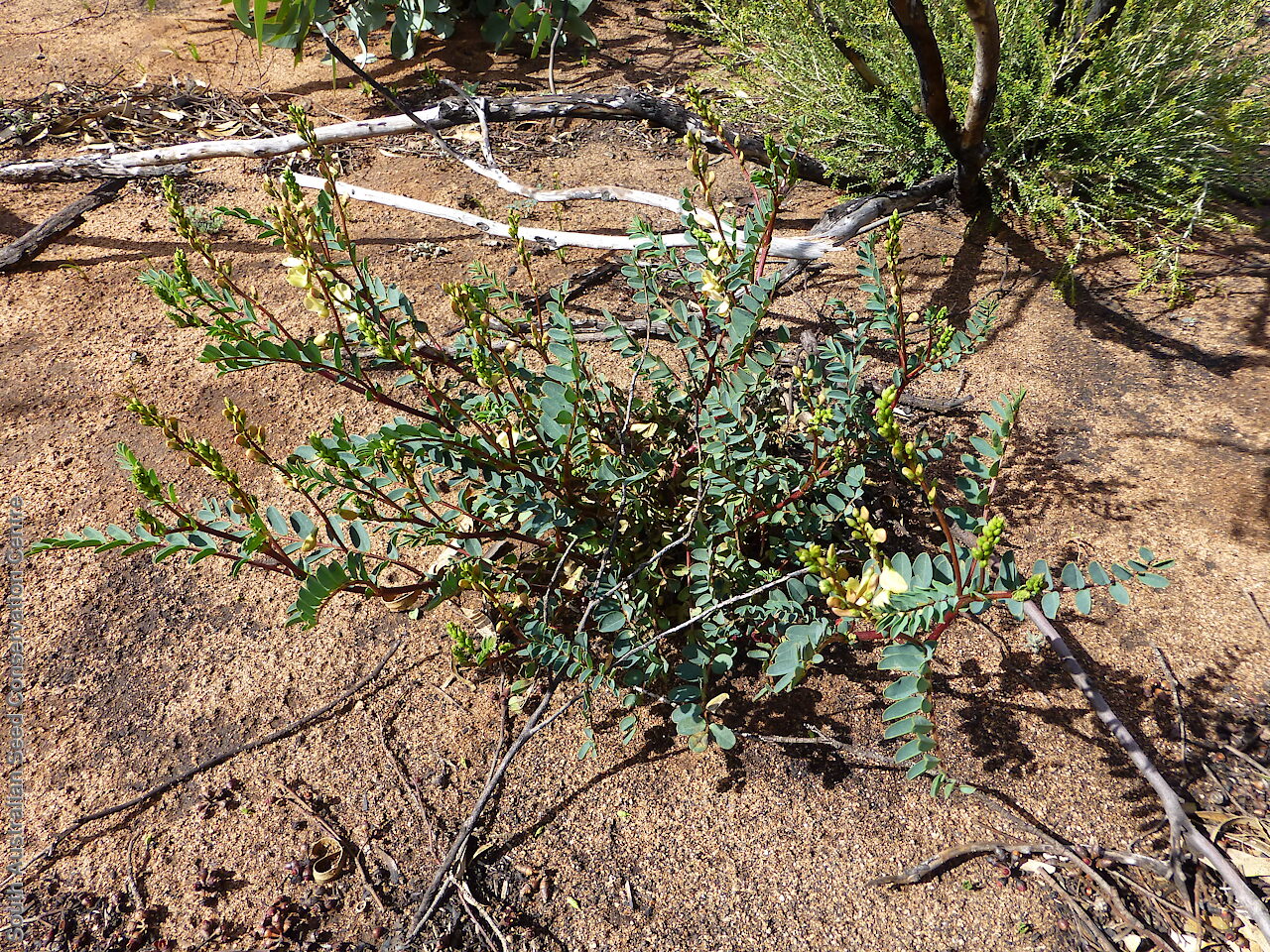
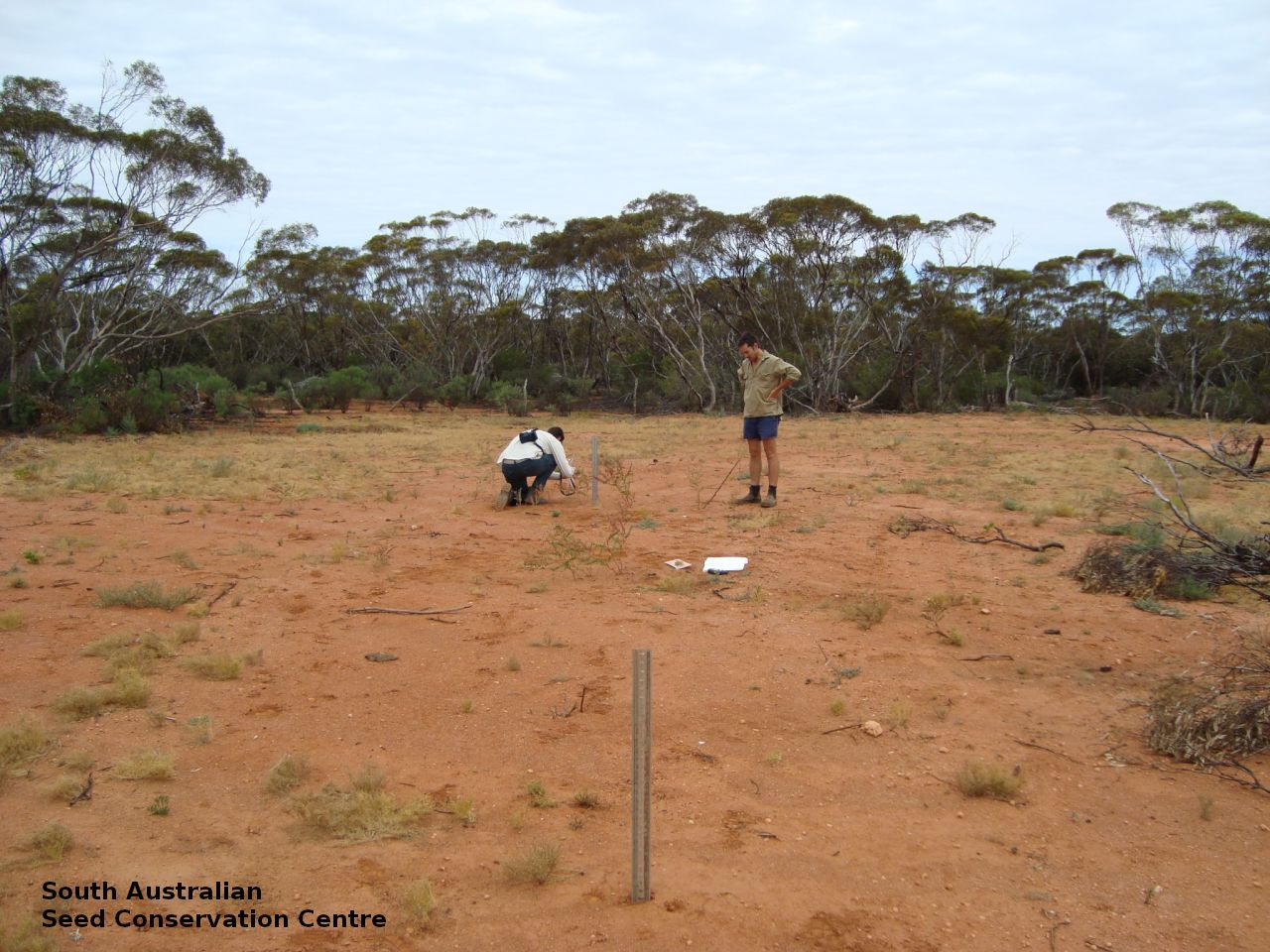
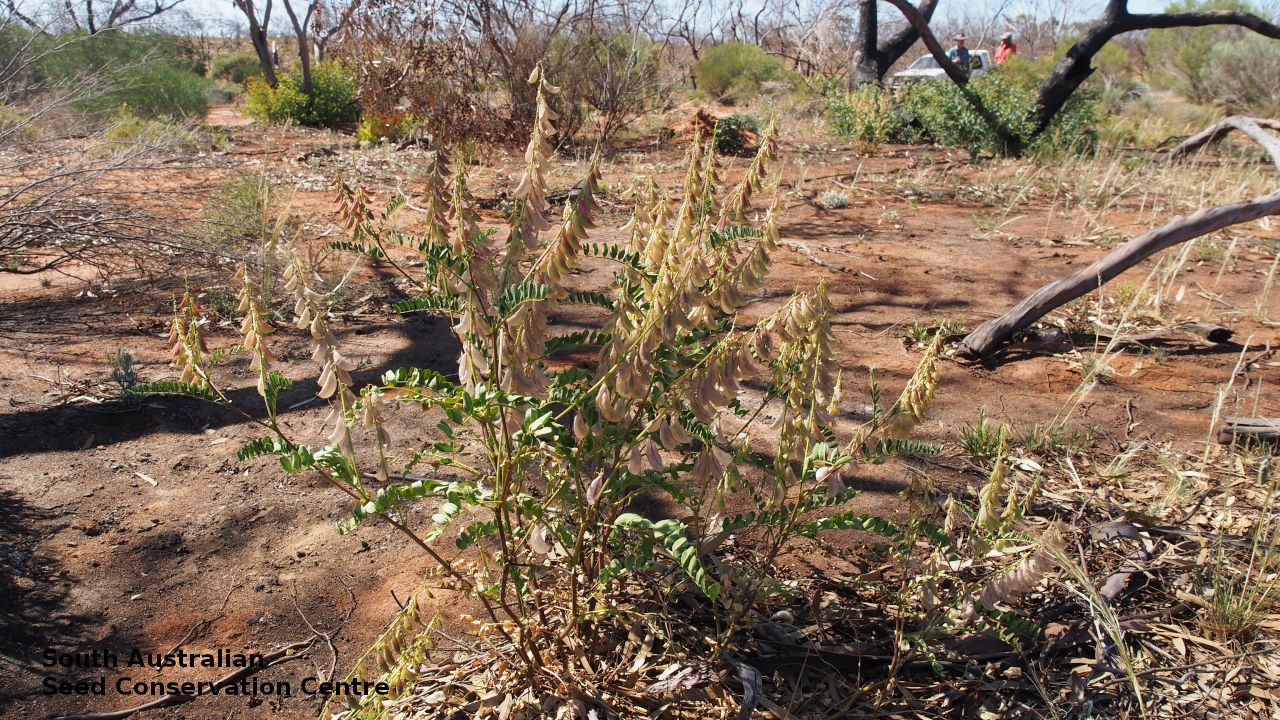
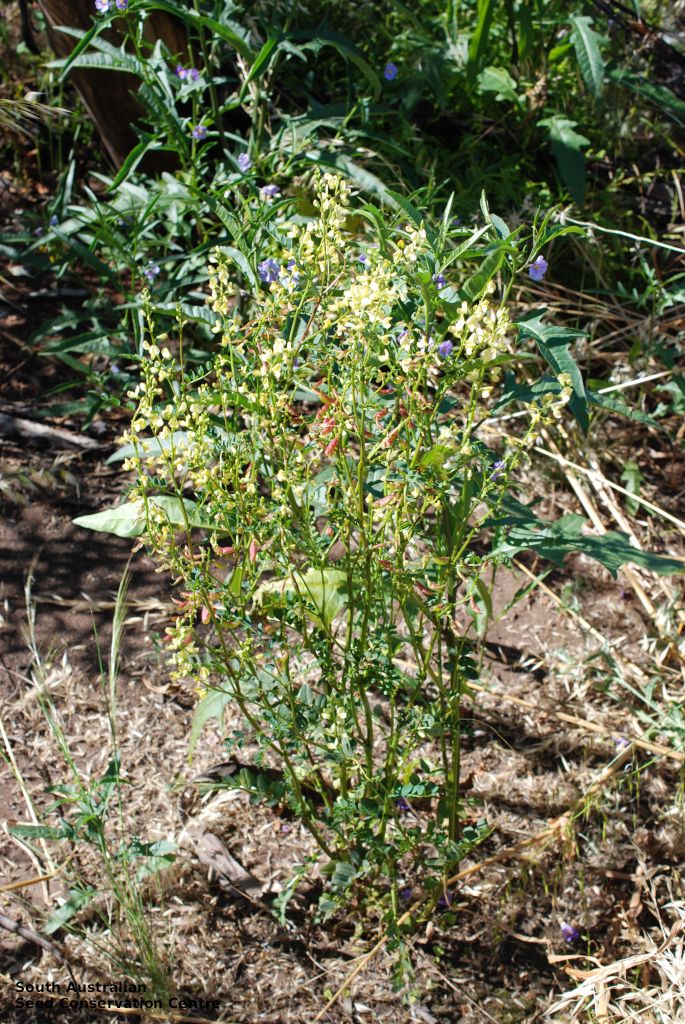
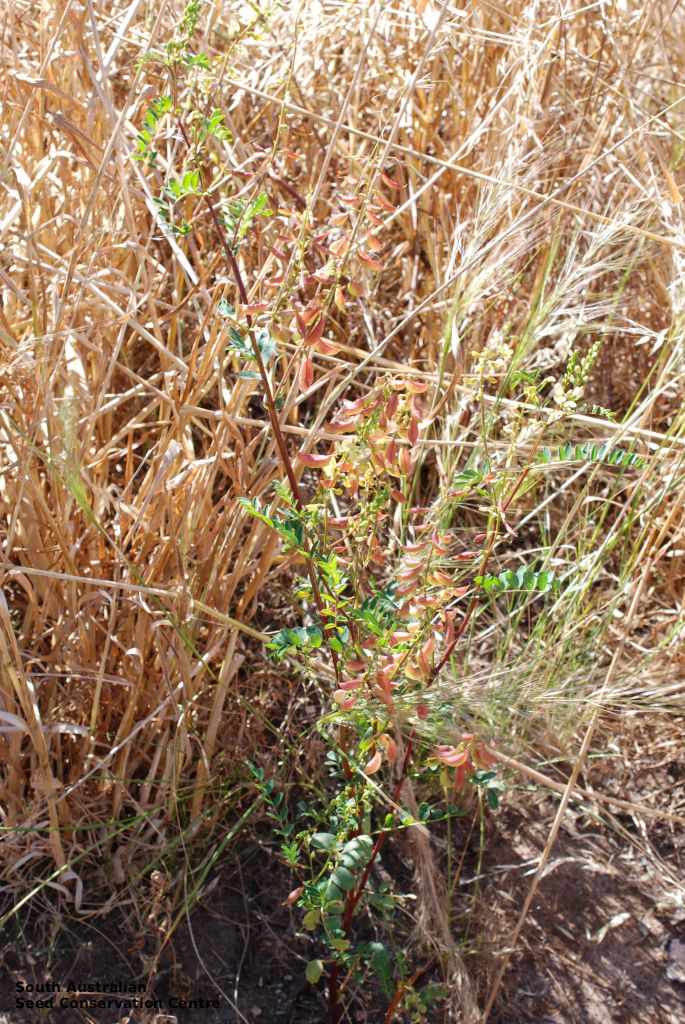
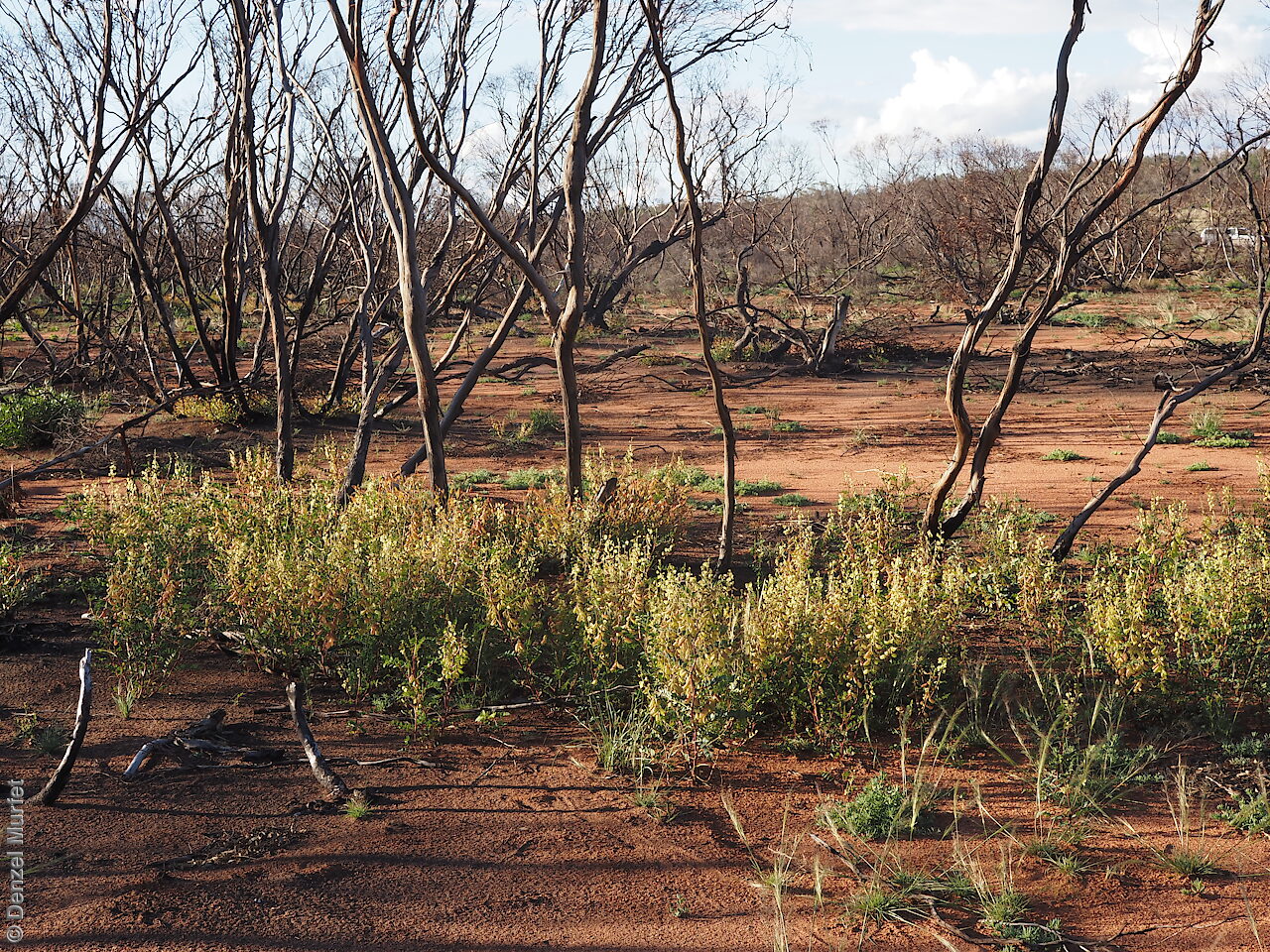
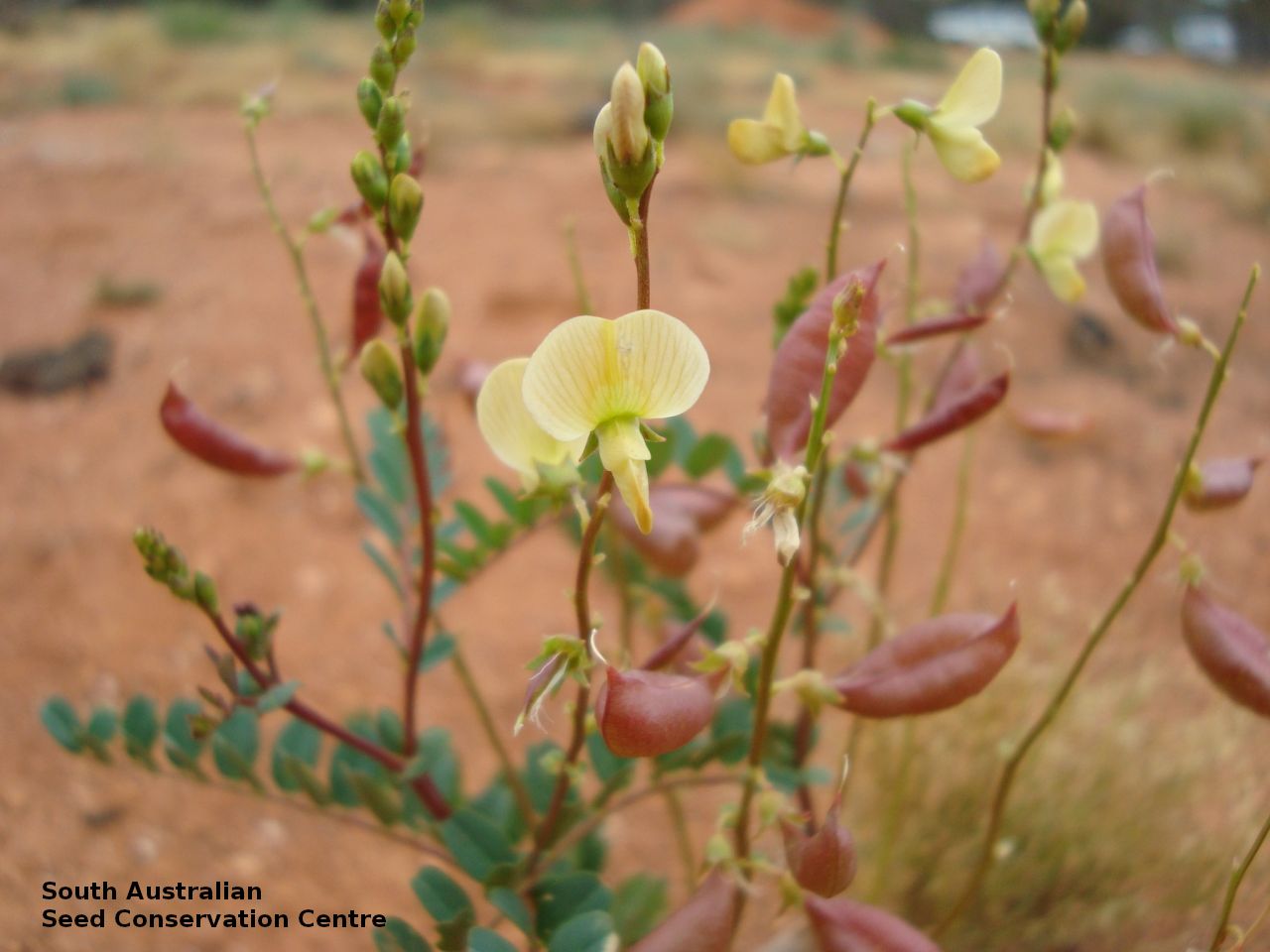
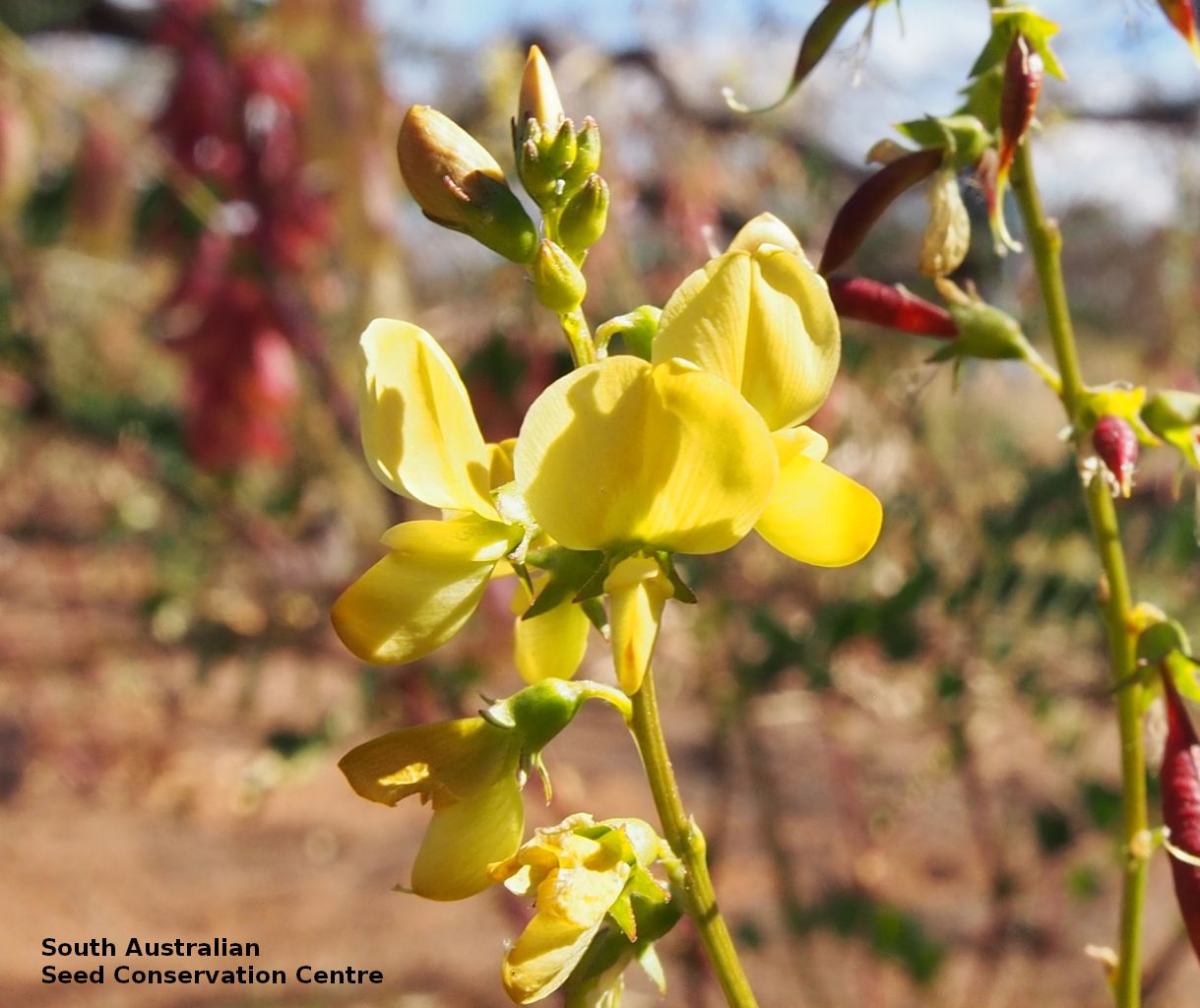
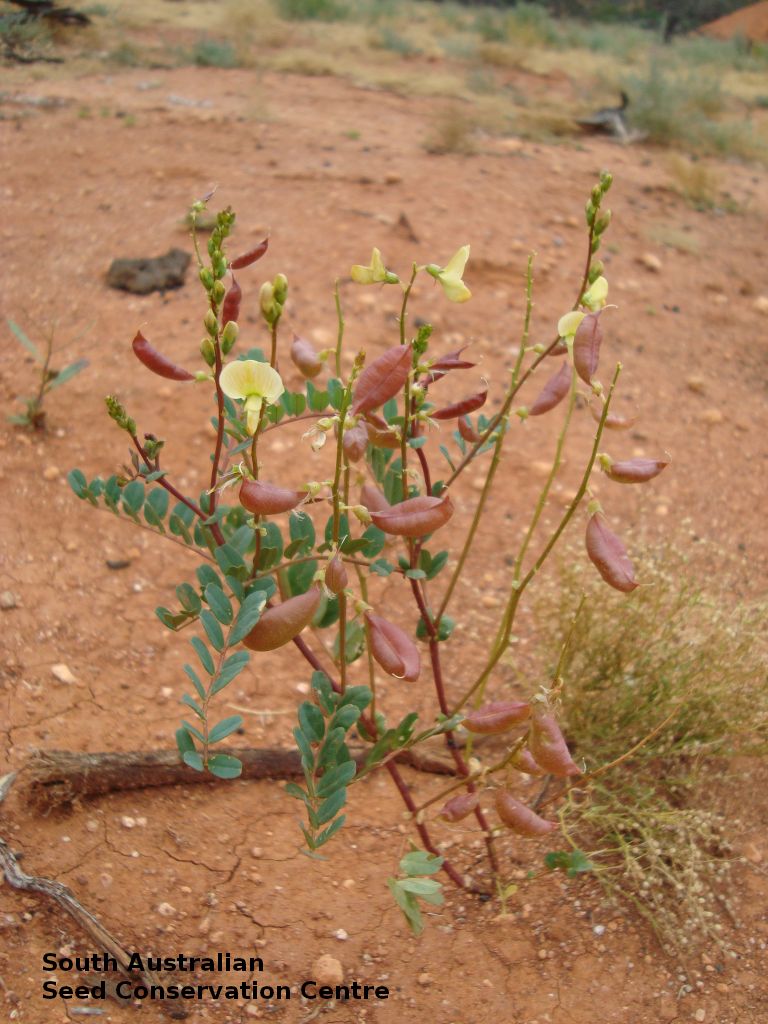
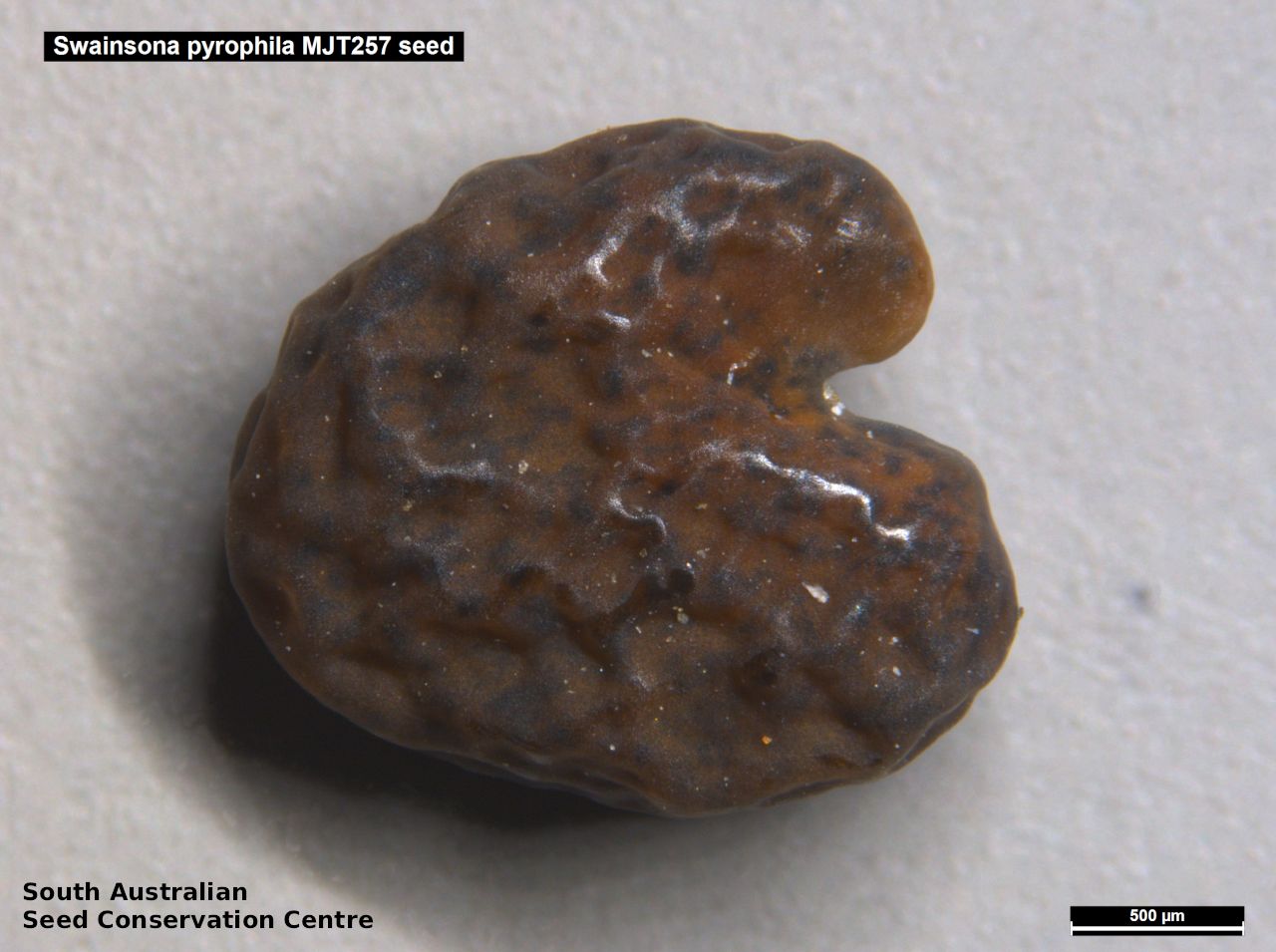
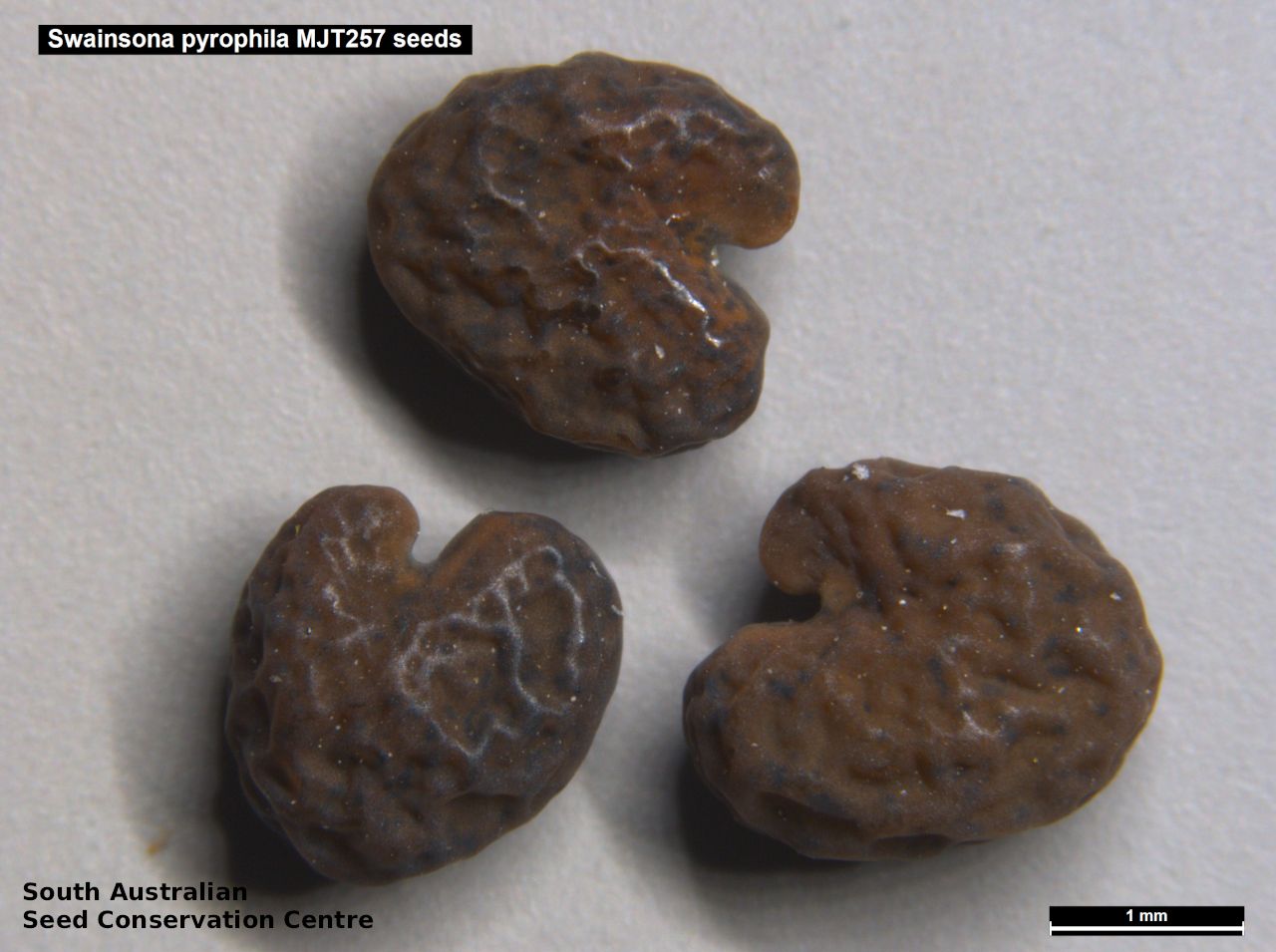
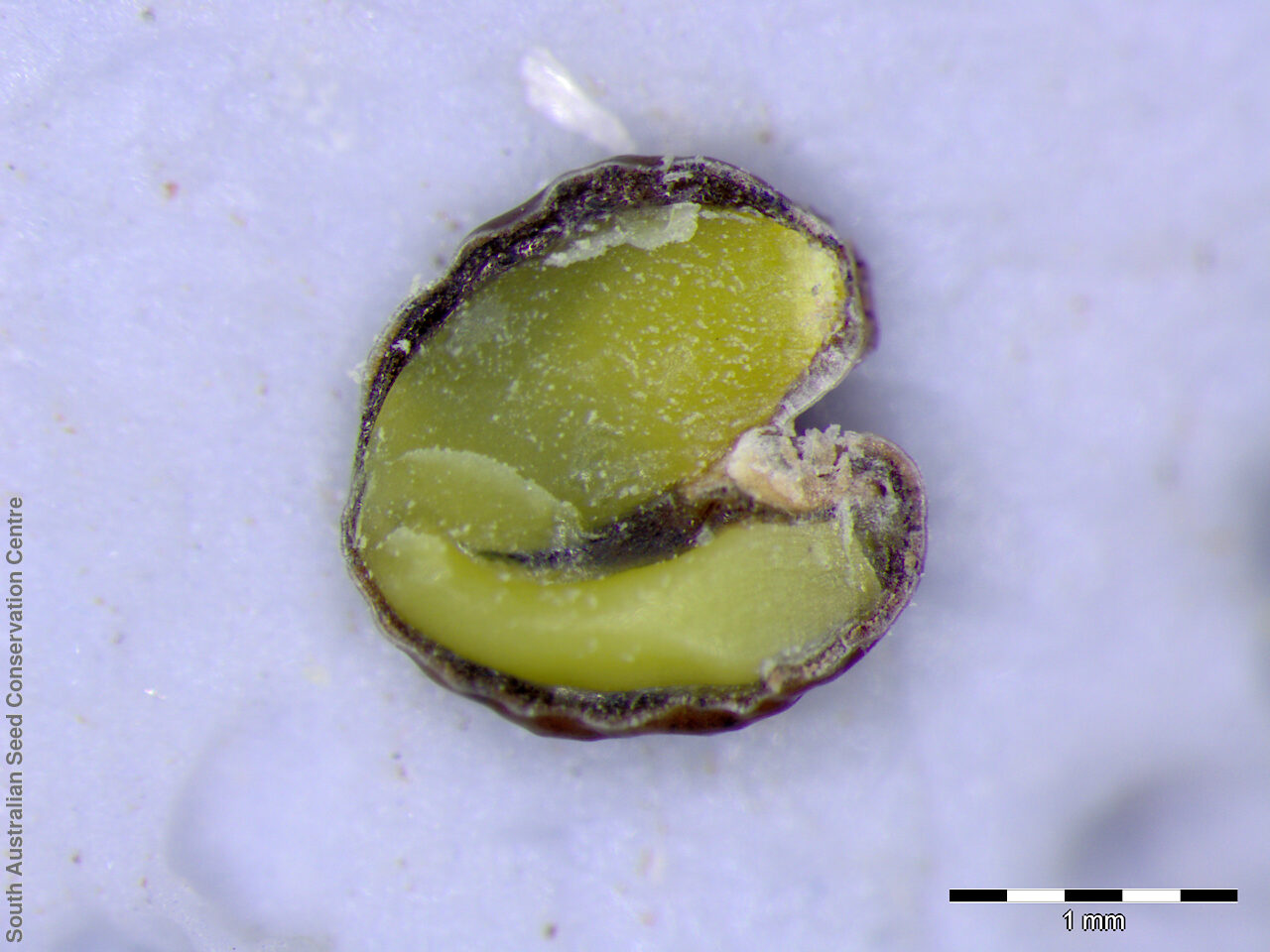
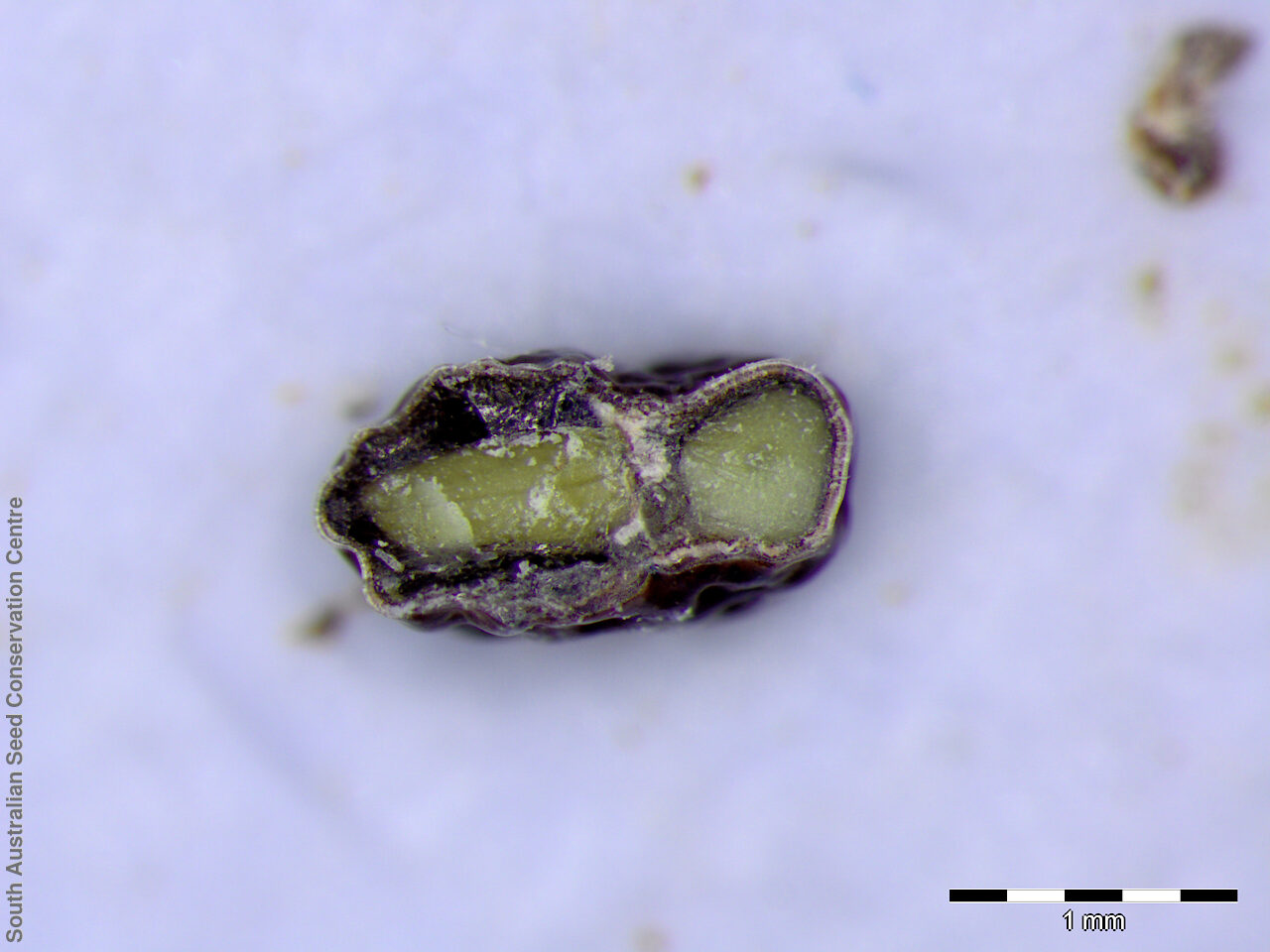
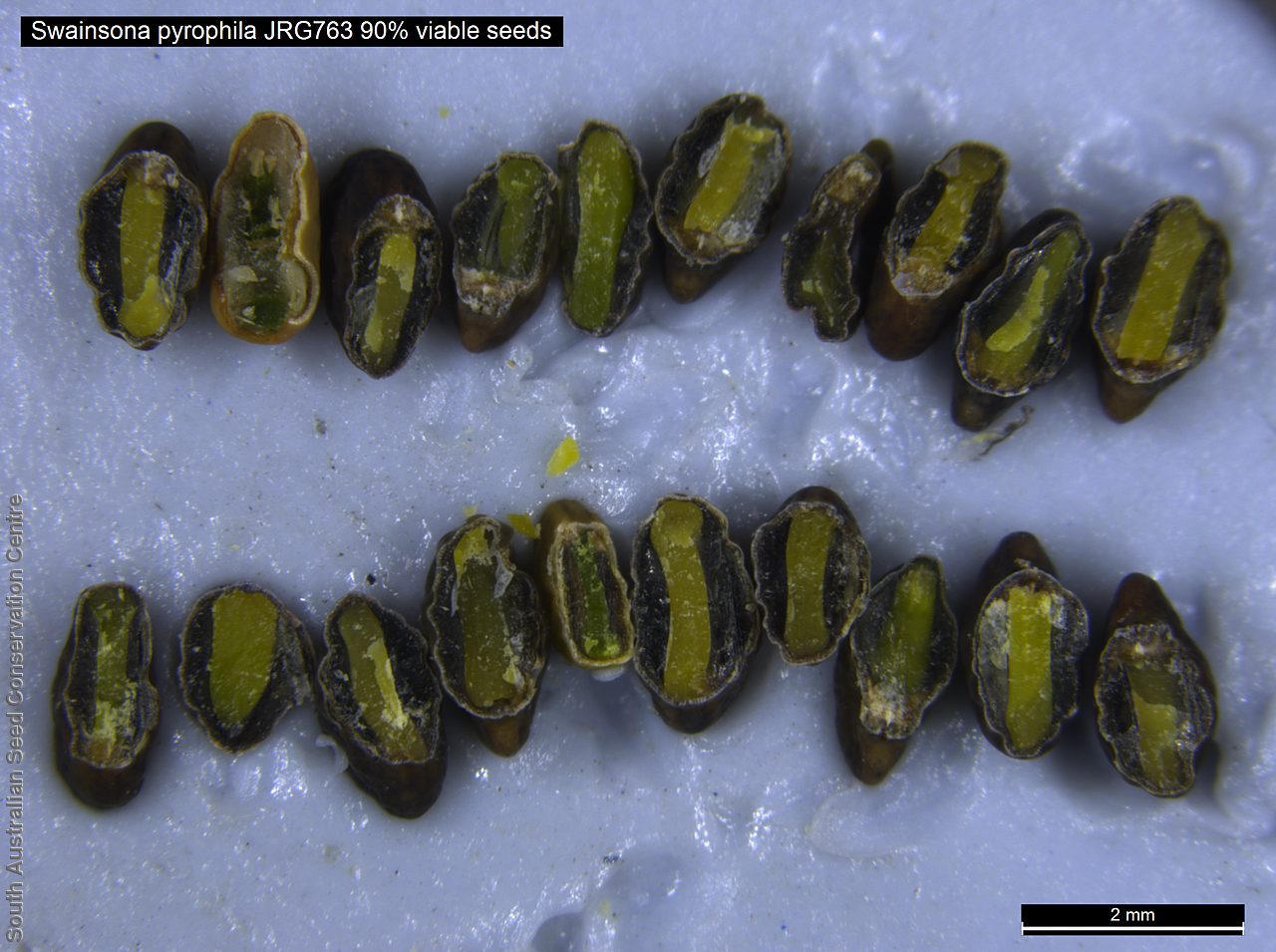

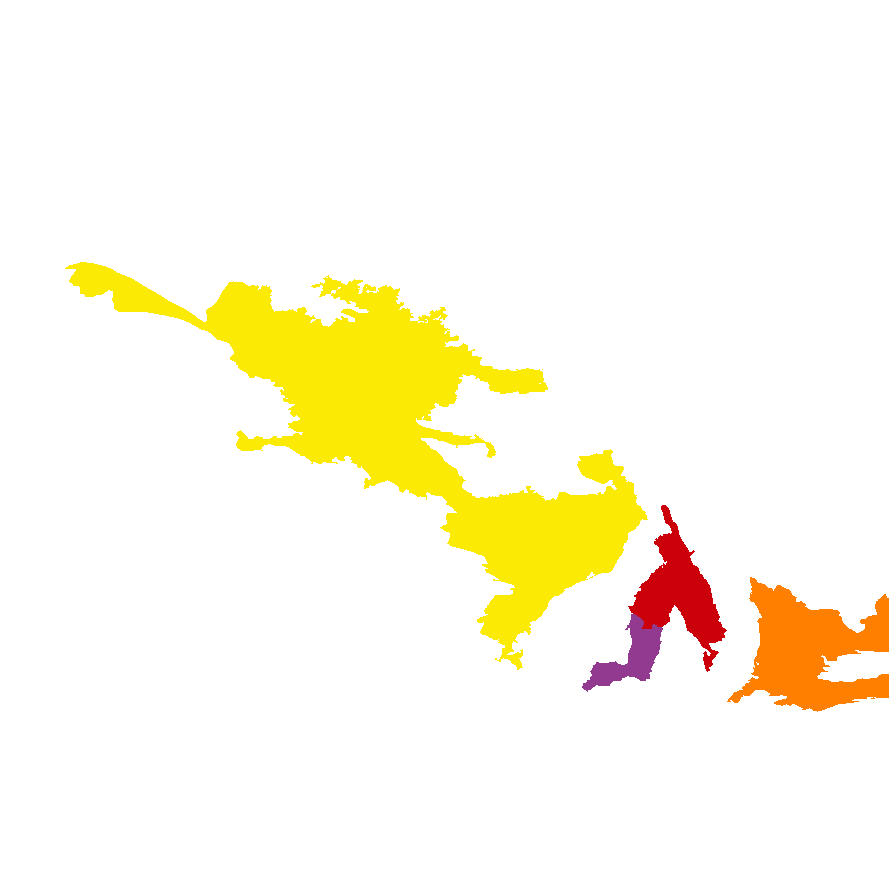
Botanical art
Common names
Yellow Swainson-pea
Yellow Darling Pea
Etymology
Swainsona named after Isaac Swainson (1746-1812), an English scientist and horticulturalist who had a private botanic garden near London. Pyrophila from the Greek 'pyr' meaning fire and 'philos' meaning lover; referring to the germination of the species post fire (fire-lover).
Distribution and status
Found in South Australia on the Eyre Peninsula with a few records from Yorke Peninsula and the Murray region, growing in sandy soils in mallee. Also found in New South Wales and Victoria. A fire responsive species. Native. Very rare in South Australia. Very rare in other states.
Herbarium regions: Eyre Peninsula, Murray, Yorke Peninsula
NRM regions: Eyre Peninsula, Northern and Yorke
AVH map: SA distribution map (external link)
Plant description
Short lived perennial shrub to 1 m tall with green leaves and reddish stems. Flowers are yellow pea-flowers with veins on the petals. Flowering between September and December. Fruits are large bladder/balloon shaped pods turning a straw colour when matured. Seeds are dark brown reniform seeds to 2mm long with a wrinkled surface. Seed embryo type is bent.
Seed collection and propagation
Collect seeds between November and January. Collect mature pods when drying off and turning red with hard brown seeds inside. Place the pods in a tray and leave to dry for a week. Then rub the pods by hand and use a sieve to separate the unwanted material. Store the seeds with a desiccant such as dried silica beads or dry rice, in an air tight container in a cool and dry place. Seed viability is high for this species. This species has physical dormancy that needs to be overcome for the seed to germinate (e.g. nicking or softening the seed coat). This is a fire responsive species and usually found in areas a year or two post fire.
Fire response
Obligate re-seeder.
Longevity: 2 year
Time to flowering: 1 year
Recovery work
In 2020-2021 this species was assessed post-fire in 1 year old fire scars. A total of 162,200 seeds have been collected & banked for 2 populations inside the 2020 fire scar. Germination screening testing the response to fire cues will be undertaken in 2021.This project was supported by the World Wildlife Fund program.
| Location | No. of seeds (weight grams) | Number of plants | Date collected | Collection number Collection location | Date stored | % Viability | Storage temperature |
|---|---|---|---|---|---|---|---|
| BGA | 5,500 (20.01 g) | 11 | 29-Oct-2014 | DJD3060 Murray | 1-Jan-2016 | 95% | -18°C |
| BGA | 24,800 (79.27 g) | 30 | 29-Oct-2014 | DJD3063 Murray | 1-Jan-2016 | 85% | -18°C |
| BGA | 590 (1.54 g) | 50+ | 4-Apr-2019 | TST1418 Eyre Peninsula | 24-Apr-2019 | 100% | -18°C |
| BGA | 2,300 (6.72 g) | 24-Nov-2009 | MJT257 Eyre Peninsula | 1-May-2019 | 100% | -18°C | |
| BGA | 39,400 (111.150 g) | 50+ | 2-Dec-2020 | JRG763 Eyre Peninsula | 28-Jun-2021 | 90% | -18°C, -80°C |
| BGA | 122,800 (378.890 g) | 200+ | 2-Dec-2020 | TST1454 Eyre Peninsula | 28-Jun-2021 | 95% | -18°C, -80°C |
Number of plants: This is the number of plants from which the seeds were collected.
Collection location: The Herbarium of South Australia's region name.
% Viability: Percentage of filled healthy seeds determined by a cut test or x-ray.